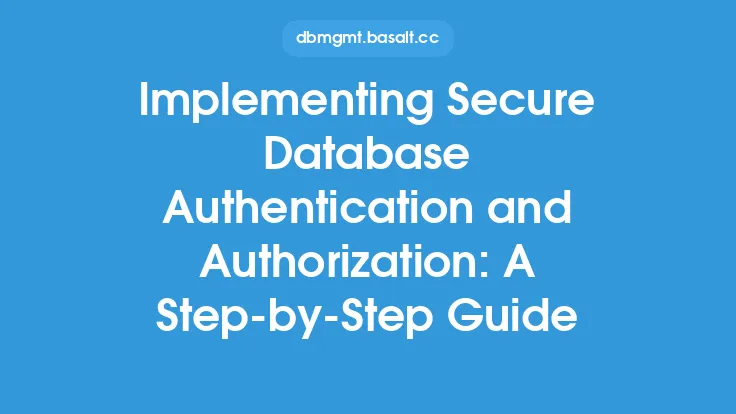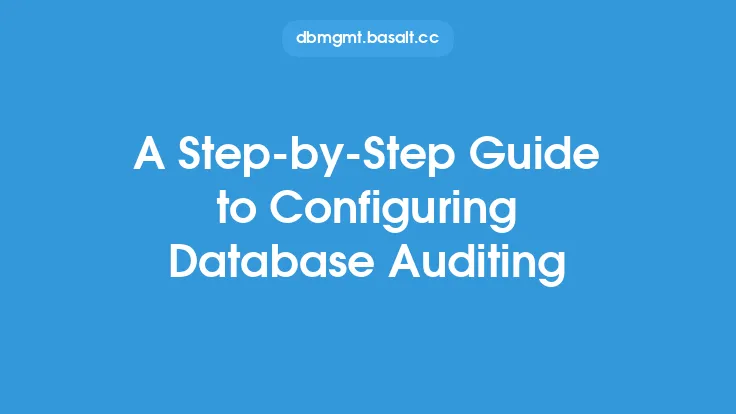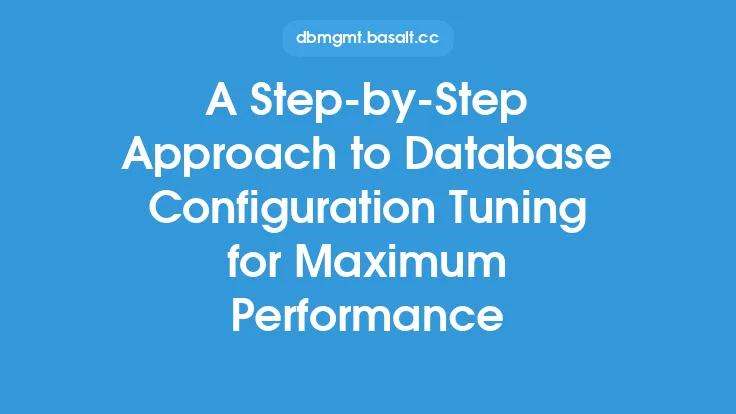To effectively plan and implement a database backup and recovery strategy, it's essential to understand how to calculate two critical metrics: Recovery Point Objective (RPO) and Recovery Time Objective (RTO). These metrics are fundamental to ensuring that your database can recover from failures and data loss, and that your business can continue to operate with minimal disruption. In this article, we'll provide a step-by-step guide on how to calculate RPO and RTO, helping database administrators to develop a robust backup and recovery plan.
Introduction to RPO and RTO Calculations
Calculating RPO and RTO involves understanding the business requirements and the technical capabilities of your database environment. RPO refers to the maximum amount of data that can be lost in the event of a failure, while RTO refers to the maximum amount of time it takes to recover from a failure. To calculate these metrics, you'll need to consider factors such as data criticality, business operations, and technical infrastructure.
Identifying Business Requirements
The first step in calculating RPO and RTO is to identify the business requirements for your database environment. This involves understanding the impact of data loss and downtime on your business operations. Consider the following factors:
- Data criticality: Which data is most critical to your business operations?
- Business operations: What are the peak hours of operation, and what are the consequences of downtime during these hours?
- Regulatory requirements: Are there any regulatory requirements that dictate the maximum allowable downtime or data loss?
- Customer expectations: What are the expectations of your customers in terms of uptime and data availability?
Assessing Technical Capabilities
Once you have a clear understanding of the business requirements, you'll need to assess the technical capabilities of your database environment. This involves evaluating the following factors:
- Database size and complexity: How large and complex is your database, and what are the implications for backup and recovery times?
- Hardware and software infrastructure: What is the capacity and performance of your hardware and software infrastructure, and how will it impact backup and recovery times?
- Network bandwidth and latency: What is the available network bandwidth and latency, and how will it impact data transfer times during backup and recovery operations?
- Backup and recovery tools: What backup and recovery tools are available, and what are their capabilities and limitations?
Calculating RPO
To calculate RPO, you'll need to consider the maximum amount of data that can be lost in the event of a failure. This involves evaluating the following factors:
- Data change rate: How frequently is data updated or inserted into the database?
- Backup frequency: How frequently are backups performed, and what is the interval between backups?
- Data criticality: What is the criticality of the data, and what are the consequences of data loss?
Using these factors, you can calculate the RPO using the following formula: RPO = (data change rate x backup interval) / data criticality. For example, if the data change rate is 100 transactions per hour, the backup interval is 4 hours, and the data criticality is high, the RPO would be 400 transactions.
Calculating RTO
To calculate RTO, you'll need to consider the maximum amount of time it takes to recover from a failure. This involves evaluating the following factors:
- Backup and recovery times: How long does it take to perform a backup or recovery operation?
- Hardware and software infrastructure: What is the capacity and performance of the hardware and software infrastructure, and how will it impact recovery times?
- Network bandwidth and latency: What is the available network bandwidth and latency, and how will it impact data transfer times during recovery operations?
Using these factors, you can calculate the RTO using the following formula: RTO = (backup and recovery time + hardware and software overhead + network overhead) / recovery priority. For example, if the backup and recovery time is 2 hours, the hardware and software overhead is 30 minutes, the network overhead is 15 minutes, and the recovery priority is high, the RTO would be 3 hours.
Refining RPO and RTO Calculations
Once you have calculated the initial RPO and RTO values, you'll need to refine them based on ongoing monitoring and analysis. This involves continuously evaluating the business requirements and technical capabilities of your database environment, and adjusting the RPO and RTO values accordingly. You should also consider implementing a feedback loop to ensure that the RPO and RTO values are aligned with the actual recovery times and data loss experienced during failures.
Implementing RPO and RTO in Database Backup and Recovery
To implement RPO and RTO in your database backup and recovery strategy, you'll need to develop a comprehensive plan that takes into account the calculated values. This involves:
- Developing a backup schedule that meets the RPO requirements
- Implementing a recovery process that meets the RTO requirements
- Continuously monitoring and analyzing the database environment to ensure that the RPO and RTO values are met
- Implementing a disaster recovery plan that takes into account the RPO and RTO values
By following these steps, you can ensure that your database backup and recovery strategy is aligned with the business requirements and technical capabilities of your environment, and that you can recover from failures and data loss with minimal disruption to your business operations.
Best Practices for RPO and RTO Calculations
To ensure accurate and effective RPO and RTO calculations, follow these best practices:
- Continuously monitor and analyze the database environment to ensure that the RPO and RTO values are aligned with the actual recovery times and data loss experienced during failures
- Implement a feedback loop to refine the RPO and RTO calculations based on ongoing monitoring and analysis
- Consider implementing a tiered backup and recovery strategy to prioritize critical data and applications
- Develop a comprehensive disaster recovery plan that takes into account the RPO and RTO values
- Continuously evaluate and refine the RPO and RTO calculations to ensure that they remain aligned with the business requirements and technical capabilities of the database environment.
By following these best practices and using the step-by-step guide outlined in this article, you can ensure that your RPO and RTO calculations are accurate and effective, and that your database backup and recovery strategy is aligned with the business requirements and technical capabilities of your environment.





